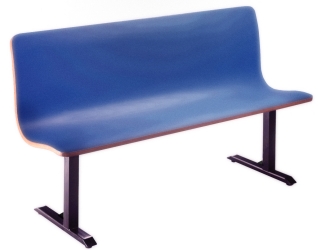 I would like to thank Ray Brown (Director of EASI Academy, Houston, TX; contributor to MidAtlantic Match Point, TennisONE, Procompare tennis and Tennis World USA) for piquing our interest in this topic. On an unrelated forum, Mr. Brown challenged contributors to (1) identify the three energy systems of the human body; (2) determine how each system is best suited for a particular tennis strategy; and (3) outline how to efficiently develop each system.
I would like to thank Ray Brown (Director of EASI Academy, Houston, TX; contributor to MidAtlantic Match Point, TennisONE, Procompare tennis and Tennis World USA) for piquing our interest in this topic. On an unrelated forum, Mr. Brown challenged contributors to (1) identify the three energy systems of the human body; (2) determine how each system is best suited for a particular tennis strategy; and (3) outline how to efficiently develop each system.
From our research - and bearing in mind that we discarded our lab coats, protractors and test tubes exactly 0.34 seconds after receiving our respective college diplomas - it appears that the three types of energy systems are as follows: ATP-PC; Glycolytic; and Oxidative.
1. ATP-PC: anaerobic energy system that utilizes ATP (as in Adenosine Triphosphate - a nucleotide that performs many essential roles in the cell including providing energy for cellular activities) to create energy. When this process takes place, ATP is broken down into ADP (Adenosine Diphosphate). The body then has to add phosphocreatine (PC) to the ADP in order to form ATP. This chemical energy source is used by living things almost like a battery - for short bursts of high-intensity work lasting approximately 10 seconds or less; think "maxing" in the weight room. In terms of tennis, this is the system that would support your body's energy needs in high intensity points of short duration: e.g., serve and volleys.
2. Glycolytic (Lactic Acid System): this system utilizes glucose (or carbohydrates stored in the muscle) to create ATP for energy. In this system, six-carbon sugars are split to three-carbon compounds with subsequent release of energy. Glycolysis can happen under anaerobic and aerobic conditions. However, because of the duration needed to break down glucose to form lactic or pyruvic acid (10 separate reactions), it is the system used for relatively short periods of high-intensity work lasting only a few minutes - think a set of circuit training. After a few minutes of work, the body accumulates lactic acid to the point where pain and fatigue (accumulation of acid breaks down the muscle) will begin to affect performance. For tennis players, this is the main source of eneregy. Most points are won and lost in bursts lasting anywhere between 30 seconds to 1 minute (more than ATP-PC but less than Oxidative). With a short rest break, the work will have to be repeated.
3. Oxidative (Aerobic System): this is an aerobic energy system where the body utilizes carbohydrates, fats and proteins to generate ATP for energy. This a complex system which relies on the circulatory system to supply oxygen. Although slow to kick in, it is the primary system used for long-term, low-to-moderate-intensity work lasting more than just a few minutes - think marathon runners. Although it's unlikely that tennis players will be called to rely on this system as a primary source of energy, it is foreseeable that under some circumstances - extremely long matches which rely mostly on endurance (extremely long points) rather than power - it may be a factor. However, we are "endurance animals" and, therefore, we should focus more on things at which we do not excel than building up the support system that we already master, The limits of endurance exercise, Basic Res. Cardiol. 2006 Sep. ("A skeletal design which favours running and walking, including the greatest ratio of leg length to body weight of any mammal; the ability to sweat and so to exercise vigorously in the heat; and greater endurance than all land mammals other than the Alaskan Husky, indicates that humans evolved as endurance animals").
A good training system will focus on developing each energy system. The first system is trained by including lots of short but high intensity drills into the practice. Think, for example, serving at 95%-100% of your speed and bolting towards the net in a quick sprint. Or, alternatively, perform 2-3 shot combos at maximum power and intensity. The player performs a lot of these sets but is given adequate time to recover. Some nutritionists would advise the post-workout ingestion of creatine (natural or supplement) along with simple sugars to rebuild the body's PC storages. The second system would be trained by performing repetitive, medium-intensity drills, lasting anywhere from 1 minute to 3 minutes. Utilize figure-8s, corners or side-to-sides (now you know why pros favor this drill). Again, adequate rest is given between sets in order to allow the body to recover. You rebuild this system by ingesting protein (amino acid leucine), glutamine, Vitamin C and water. To train the third system, you want to include drills that last anywhere from 20-40 minutes (depending on the level of the player). Although these drills would be of relatively low physical intensity (e.g. cross-courts, down-the-lines), the players should "suck in" sufficient oxygen in order for the oxidative process to commence. Players should look for slightly elevated but rhythmic breathing to ensure that enough oxygen is being ingested. If possible, coaches should develop training regimens where the boundaries of all three systems are being pushed beyond the player's comfort zones.
Nevertheless, since most points are played within the ATP-PC and Glycolytic range, a competitive player who has mastered the basics of the various strokes should spend the majority of his practices trying to improve those 2 systems. Unfortunately, a lot of players spend an inordinate amount of time working on stationary drills (which may kickstart the aerobic energy system) that have no effect on increasing the threshold of the two main energy systems for this type of an activity.
 Thursday, January 26, 2012 at 12:25PM
Thursday, January 26, 2012 at 12:25PM  CAtennis
CAtennis  Again, much gratitude is due to Roy Coopersmith for suggesting the following drill. The purpose of this drill is to improve the depth of one's groundstrokes. One way to do this would be to place a broomstick or PVC pipe through, or, conversely, an Airzone Training System over the net. This forces the player to aim considerably higher than the net thereby increasing the player's margin for error in a match.
Again, much gratitude is due to Roy Coopersmith for suggesting the following drill. The purpose of this drill is to improve the depth of one's groundstrokes. One way to do this would be to place a broomstick or PVC pipe through, or, conversely, an Airzone Training System over the net. This forces the player to aim considerably higher than the net thereby increasing the player's margin for error in a match.


